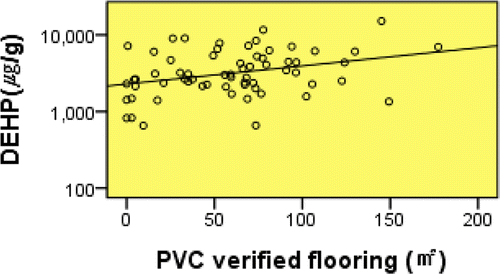Large areas of vinyl flooring in daycares and schools appear to expose children to a group of compounds called phthalates, which have been linked to reproductive and developmental problems, scientists are reporting. They published their results on the ubiquitous plastic ingredients in the ACS journal Environmental Science & Technology.
Chungsik Yoon and colleagues note that polyvinyl chloride (PVC), also known as vinyl, is the second most-produced plastic by volume and is commonly used in flooring. Phthalates, which increase both the flexibility and durability of PVC, are key ingredients in PVC materials used in vinyl flooring and a wide range of other products, including toys, food packaging, medical devices, and even pharmaceuticals, cosmetics and soaps. The problem is that these additives leach out of products into the air and dust. Concern over their potential health effects, particularly in infants and children, has spurred scientists to investigate human exposure to them indoors. However, most studies fall short of verifying what products were contributing to indoor phthalate levels. Yoon's team set out to fill that gap.
Using a portable instrument called an X-ray fluorescence (XRF) analyzer, they tested the flooring materials in 50 public and private daycares and kindergartens in Seoul, South Korea, to test for PVC. They also collected dust samples from various surfaces in the buildings and analyzed them. The PVC-verified flooring was a major source of the most common phthalate that they detected, called di(2-ethylhexyl) phthalate (known as DEHP). "This is the first study to verify the sources of phthalates with an XRF analyzer and to evaluate the relationship between phthalate concentrations and PVC-verified materials," the scientists state.
More information: "Phthalate Levels in Nursery Schools and Related Factors" Environ. Sci. Technol., Article ASAP. DOI: 10.1021/es4025996
Abstract
Phthalate esters, which are known endocrine disruptors, are ubiquitously present throughout indoor environments. Leaching from building materials may be a major source of phthalate esters. In this study, we evaluated phthalate ester concentrations in dust samples from 64 classrooms located in 50 nursery schools and explored the critical factors affecting phthalate concentrations, especially with regard to building materials. Dust was sampled by a modified vacuuming method, and building materials were assessed using a portable X-ray fluorescence (XRF) analyzer to determine whether they contained polyvinyl chloride. Di-n-butyl phthalate (DBP), di(2-ethylhexyl) phthalate (DEHP), and di-isononyl phthalate (DINP) were the most frequently detected phthalates. Of these, DEHP was the most abundant phthalate, with a geometric mean of 3170 μg/g dust, and concentrations were significantly correlated with the area of polyvinyl chloride (PVC)-verified flooring. DINP, which has not been well-reported in other studies, was the second-most abundant phthalate, with a geometric mean of 688 μg/g dust, and showed a critical relationship with the number of children in the institution and the agency operating the nursery school. This is the first study to verify the sources of phthalates with an XRF analyzer and to evaluate the relationship between phthalate concentrations and PVC-verified materials.
Journal information: Environmental Science & Technology
Provided by American Chemical Society



















